The question might sound kind of funny, but I'm unsure how else to word it. So...
Pictures!!
Currently, I have a setup like this:

simulate this circuit – Schematic created using CircuitLab
What I would like to have is something like this:

For the digital stuff, an optoisolator does the trick, and for AC signals an isolation transformer does the the trick and in each one of these devices, the input and output grounds are separated.
What method, or what should I be looking into in order to isolate two DC system grounds from each other? (The DC signal can vary from mV to 10's of volts.)
